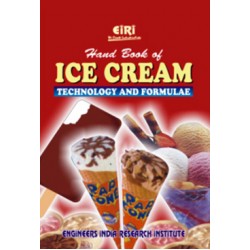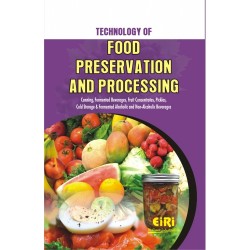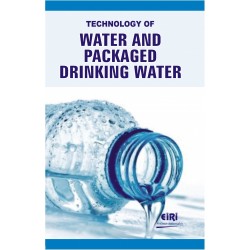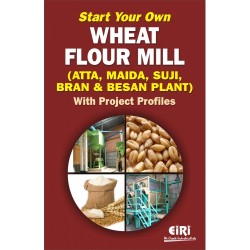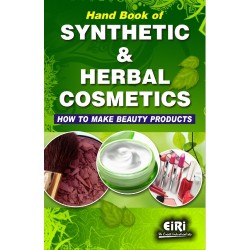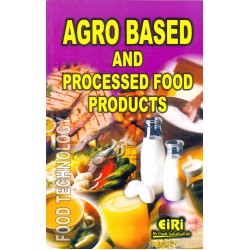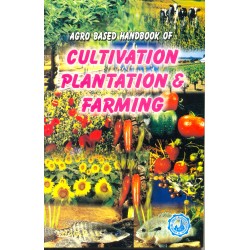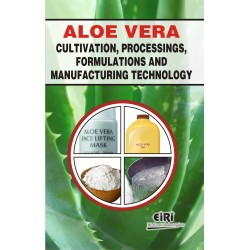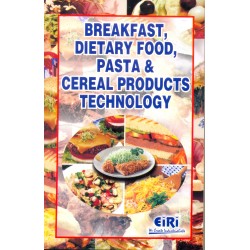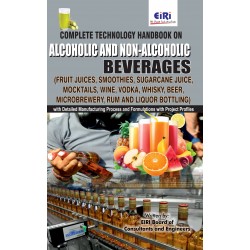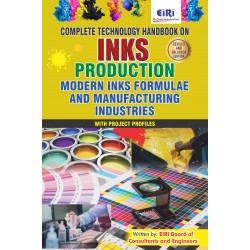Technology Of Carbonated Drinks And Non-Carbonated Beverages With Formulations (A Complete Technology Book On Non-Alcoholic Beverages)

- More than 40 years of experience
- Managed by expert industrial consultants
- ISO 9001-2015 Certified
- Registered under MSME, UAM No: DL01E0012000
- 24/5 Research Support
Get your quesries resolved from an industry expert. Ask your queries before report or book purchase. - Custom Research Service
Speak to the our consultant to design an exclusive study to serve your research needs. - Quality Assurance
All reports are prepared by highly qualified consultants & verified by a panel of experts. - Information Security
Your personal & confidential information is safe & secure.
- Fruit types
- The structure of the soft fruits
- Apple (ripe fruit)
- A typical stone fruit or drupe, e.g. the damson (Prunus) and structure of a ripe apple (Malus)
- The basics of plant reproduction and fruit formation
- Component parts of a typical citrus fruit
- Respiration climacteric
- Fruit types for processing
- Details on fruit juice processing
- Use of centrifuges in processing
- Clarifying decanter (horizontal scroll centrifuge)
- Horizontal rotary press, Universal Fruit Press HP5000
- Enzymes in fruit juice processing
- Self cleaning clarifier
- Extraction Process of citrus juices
- Juice concentration by evaporation Method
- Range of product concentrations technically attainable from depectinised juices
- Flow diagram of the fruit juice concentration process
- Volatile components
- Rising film evaporator
- Spinning cone column
- Spinning cone column
- Composition of fruit juice volatiles
- Quality issues
- Absolute requirements
- Other quality considerations
- Formulations of the squashes
- Fruit and Vegetables as Raw Materials
- Structure of the grape
- Section through the grape
- qanatomy of apple tissue
- Fruit and vegetable juice
- Manufacturing Process of Fruit and Berry Juices
- Eccentric screw pump with force feed and connected macerator
- GEA Westfalia Separator frupex line
- Grape juice Process
- Making date syrup
- Processing dates/plums into juice
- Description of line
- Manufacturing Process for making dried plums into juice
- Process for making cherries into juice
- Process for making blackcurrent juice
- Currants and strawberries as examples of berry fruits
- Manufacture of puree
- Tropical Fruits
- Production diagram for making juice and purees from apricots
- Mill juice production
- Production of Vegetable juices
- Process for making clear banana juice
- Production diagram for producing juice from pomegranates
- Pomace from decanter
- Producing beetroot juice
- Process for producing carrot juice
- Process for making vegetable pulp concentrate
- Process and formulation of carbonated soft drinks
- Water treatment
- Water impurities and their effect
- Diagram of a water treatment process using rapid coagulation
- Citric acid
- Acidulants used in beverage formulations
- Tartaric acid
- Palate acidity equivalents
- Phosphoric acid
- Lactic acid
- Acetic acid
- Malic acid
- Fumaric acid
- Ascorbic acid
- Flavourings
- Water miscible flavourings
- Example of a water miscible flavouring peach
- Colours
- Cloud and flavour emulsions
- Preservatives
- Artificial (synthetic) colours permitted in soft drinks to a maximum level of 100 mg/1
- Permitted food colourings derived from natural sources (EU Directive 94/36/EC)
- Preservatives and their salts
- Sprite Type
- Fenda Type
- Cola Typa
- Taste Orange
- Litchy Type
- Strawberry Type
- Ingredient formulae for flavourings used in the notional pine apple and grapefruit crush (litres)
- Ingredients
- History
- Purported secret recipes
- Merory recipe
- Beal/This American Life recipe
- Ingredients in Kool Aid and Tang orange flavored drink mixes, in order of decreasing quantity
- Object
- Nutritional values of Kool-Aid and Tang Vitamin and mineral values are reported as percent daily values based on a 2,000 calorie diet
- Ingredients and quantities used to prepare 8 ounces (250 ml) or orange flavored drink
- Materials Needed
- Ingredients
- Composition
- Materials and methods
- Results and Discussion
- Characteristics of sweet potato non alcoholic beverage
- Mean Score for sensory evaluation of beverage samples
- Materials and methods
- Centesimal composition and minerals in king palm leaf sheath juice
- Centesimal composition
- Minerals
- Results and discussion
- Phenolic compounds in juice from leaf sheath of king palm
- Overall acceptability and frequency of consumption for two formulations of non alcoholic beverage from frozen king palm leaf sheath juice
- Low Alcoholic Self carbonated Fermented Beverage
- Material and Methods
- Results and Discussion
- Percentage homology of yeast isolate based on nucleotride sequence
- Effect of blending on sensory scores of low alcoholic self carbonated beverage
- Effect of storage on physico chemical characteristic of low alcoholic self carbonated carrot lemon (3.1) beverage
- Dilutable beverages 1964 UK reserved descriptions for dilutable fruit drinks
- Principal ingredients of dilutable soft drinks
- Fruit components
- Typical concentrated juices and comminutes for manufacturing dilutable drinks
- Simplified outline process for citrus comminute production
- Carbohydrates
- Comparison of degrees Brix, degrees Baume and physical characteristics of carbohydrate syrups
- Comparison of carbohydrate sweeteners
- Comparison of intense sweeteners
- Other ingredients
- Preservative levels
- Convenient conversions for preservative materials
- Manufacturing operations
- Process for manufacture of dilutables
- Pasteurisation
- Homogenisation
- Filling and packaging
- Product range
- Ready to drink non carbonated products
- Formulations
- Special problems
- Manufacturing and packing
- Packaging types
- Fruit juices and nectars
- Normal manufacturing and packing processes for aseptic and non aseptic products
- Flash pasteurisation
- In-packi pasteurisation
- Hot filling
- High pressure pasteurisation
- Packaging
- Cans
- Bulk packs
- Tea
- Chlorogenic acid and its analogues
- Coffee
- Citrus and Citrus Derived Beverages
- Flavonoid glycoside, Rutin
- Other Fruit Based Beverages
- Key sulfur volatiles in fruits
- S-sinapyl glutathione peptide from pine apple
- Miscellaneous
- Key Non volatile constituents of Energy Drinks
- Resveratrol structure
- Bottled waters
- Examples of identified microrganisms isolated from bottled waters
- Control of contaminations
- Carbonation
- Soft drinkis and alcoholic beverages
- manufacture of soft drinks
- Categories and typical properties of soft drinks
- Soft drink manufacturing processes
- Ingredients and manufacture of alcoholic beverages
- Examples of alcoholic beverages produced in a brewery environment
- Blended products not involving a yeast fermentation
- Traditional type ciders
- Spoilage microbes in soft drinks
- Yeasts and soft drink spoilage
- Examples of metabolities and quality changes associated with common spoilage microbes
- Examples of yeast species found in soft drink factory environments
- Poor pipe joint
- Syrup composition
- Syrup rooms and proportioning systems
- Mojonnier system
- The modern syrup room
- Volumetric flow meter system
- Mass flow meter skid
- Continuous blending system
- Valve matrix
- Pigging system schematic
- Instrumentation
- Sugar
- Tanker unloading bulk sugar
- Sugar dissolving system
- Pre mixes
- Pasteurisation
- Tunnel pasteuriser
- Convection flow in a can during tunnel pasteurisation
- Time temperature graph for a tunnel pasteuriser
- CIP system schematic
- Syrup room building design
- Schematic of a syrup mixer and carbonator
- Future developments
- Flash pasteuriser exploded drawing
- Carbonated bubble
- Carbon dioxide
- Carbon dioxide phase diagram
- Production of carton dioxide
- Fermentation
- Various carbon dioxide production systems
- Typical carbon dioxide fermentation recovery system
- Carbon dioxide production by flue gas recovery
- Membrane CO2 recovery system
- Commodity specification for carbon dioxide
- Possible trace impurities by source type (excluding air, gases and water)
- Carbon dioxide delivery schematic
- Carbonation
- Refrigerated carbonation system
- Carbonation systems
- Typical carbonation system
- Simple in line caronator
- Bubble growth
- Principles of gravity filling
- Gravity filling cycle
- Couner pressure filling cycle diagram
- Bottle evacuation
- Counter pressure filling cycle
- Infeed worm & starwheel
- Filler bowl level control
- De-aerator & carbonator
- Carbon dioxide solubility in water
- Krones VKPV-CF counter pressure filler
- Level filling
- Mechanically operated valve
- Mechanical filling valve with pneumatic control
- Filling valve pneumatically actuated with level probe
- Glass bottle filling
- Decelerating bottle stop
- Bottle transfer in filler
- Bottle lifters
- CO2 flushing
- PET (polyethylene terephthalate) bottle filling
- Full PET bottle conveying
- Bottles on the filler carousel sealed against centring bel
- Two views of air veying empty PET bottles
- Emply PET bottle transfer into the filler
- Filler carousel
- Neck lifts
- The volumetric can (VOC) filler
- Filler bowl level control
- System expansion the VOC-C can filler
- Product level and pressure control system in a freestanding product tank
- Filling
- Snifting
- Recharging the metering chamber
- CIP cleaning
- CIP cleaning phase All areas that could be in contact with product are cleaned with a continuous flow during the CIP cycle
- Philosophy of line layouts
- Glass bottle filling lines
- Accumulating conveyor designs
- Structure of a typical PET bottle compact filling line
- Typical returnable glass production line schematic
- Robot palletiser
- Empty bottle inspection principles
- Bottle jetting action by rotating cross flow spray nozzles
- Can filling lines
- typical can line
- PET bottle filling lines
- Plant & Machinery
- Fixed Capital
- Raw Materials
- Total Working Capital/Month
- Total Capital Investment
- Turn Over/Annum
- Plant & Machinery
- Fixed Capital
- Raw Materials
- Total Working Capital/Month
- Total Capital Investment
- Turn Over/Annum
- Plant & Machinery
- Fixed Capital
- Raw Materials
- Total Working Capital/Month
- Total Capital Investment
- Turn Over/Annum
- Plant & Machinery
- Fixed Capital
- Raw Materials
- Total Working Capital/Month
- Total Capital Investment
- Turn Over/Annum
- Plant & Machinery
- Fixed Capital
- Raw Materials
- Total Working Capital/Month
- Total Capital Investment
- Turn Over/Annum
- Plant & Machinery
- Fixed Capital
- Raw Materials
- Total Working Capital/Month
- Total Capital Investment
- Turn Over/Annum
- Plant & Machinery
- Fixed Capital
- Raw Materials
- Total Working Capital/Month
- Total Capital Investment
- Turn Over/Annum
- Plant & Machinery
- Fixed Capital
- Raw Materials
- Total Working Capital/Month
- Total Capital Investment
- Turn Over/Annum
- Plant & Machinery
- Fixed Capital
- Raw Materials
- Total Working Capital/Month
- Total Capital Investment
- Turn Over/Annum
- Plant & Machinery
- Fixed Capital
- Raw Materials
- Total Working Capital/Month
- Total Capital Investment
- Turn Over/Annum
- Plant & Machinery
- Fixed Capital
- Raw Materials
- Total Working Capital/Month
- Total Capital Investment
- Turn Over/Annum
- Plant & Machinery
- Fixed Capital
- Raw Materials
- Total Working Capital/Month
- Total Capital Investment
- Turn Over/Annum
- Plant & Machinery
- Fixed Capital
- Raw Materials
- Total Working Capital/Month
- Total Capital Investment
- Turn Over/Annum
How to Make Project Report?
Detailed Project Report (DPR) includes Present Market Position and Expected Future Demand, Technology, Manufacturing Process, Investment Opportunity, Plant Economics and Project Financials. comprehensive analysis from industry covering detailed reporting and evaluates the position of the industry by providing insights to the SWOT analysis of the industry.
Each report include Plant Capacity, requirement of Land & Building, Plant & Machinery, Flow Sheet Diagram, Raw Materials detail with suppliers list, Total Capital Investment along with detailed calculation on Rate of Return, Break-Even Analysis and Profitability Analysis. The report also provides a birds eye view of the global industry with details on projected market size and then progresses to evaluate the industry in detail.
We can prepare detailed project report on any industry as per your requirement.
We can also modify the project capacity and project cost as per your requirement. If you are planning to start a business, contact us today.
Detailed Project Report (DPR) gives you access to decisive data such as:
- Market growth drivers
- Factors limiting market growth
- Current market trends
- Market structure
- Key highlights
Overview of key market forces propelling and restraining market growth:
- Up-to-date analyses of market trends and technological improvements
- Pin-point analyses of market competition dynamics to offer you a competitive edge major competitors
- An array of graphics, BEP analysis of major industry segments
- Detailed analyses of industry trends
- A well-defined technological growth with an impact-analysis
- A clear understanding of the competitive landscape and key product segments
Need Customized Project Report?
- Ask for FREE project related details with our consultant/industry expert.
- Share your specific research requirements for customized project report.
- Request for due diligence and consumer centric studies.
- Still haven't found what you're looking for? Speak to our Custom Research Team
About Engineers India Research Institute:
Note: We can also prepare project report on any subject based on your requirement and country. If you need, we can modify the project capacity and project cost based on your requirement.
Our Clients

Our Approach
- Our research reports comprehensively cover Indian markets (can be modified as per your country), present investigation, standpoint and gauge for a time of five years*.
- The market conjectures are produced on the premise of optional research and are cross-accepted through associations with the business players
- We use dependable wellsprings of data and databases. What's more, data from such sources is handled by us and incorporated into the report
Why buy EIRI reports?
- Our project reports include detailed analysis that help to get industry Present Market Position and Expected Future Demand.
- Offer real analysis driving variables for the business and most recent business sector patterns in the business
- This report comprehends the present status of the business by clarifying a complete SWOT examination and investigation of the interest supply circumstance
- Report gives investigation and top to bottom money related correlation of real players/competitors
- The report gives gauges of key parameters which foresees the business execution





















-250x250h.jpg)
-250x250.jpg)
